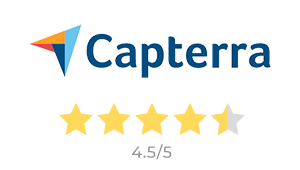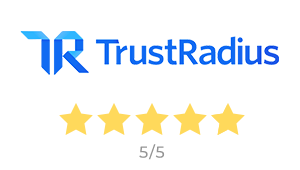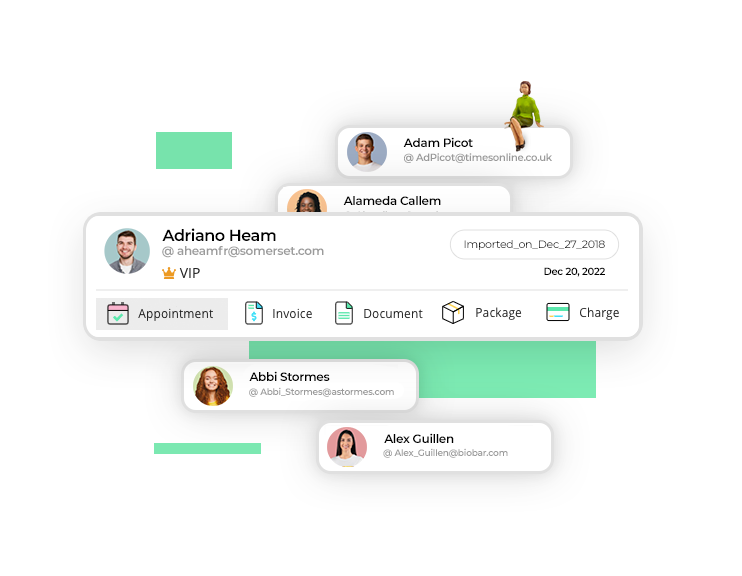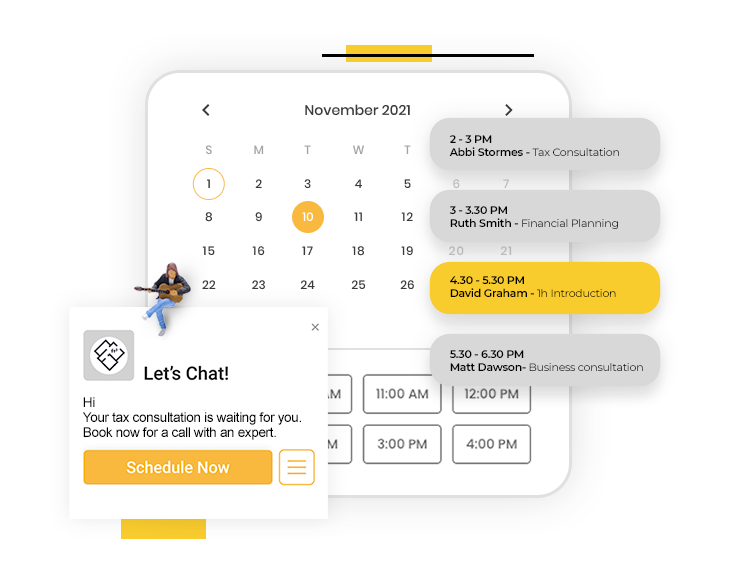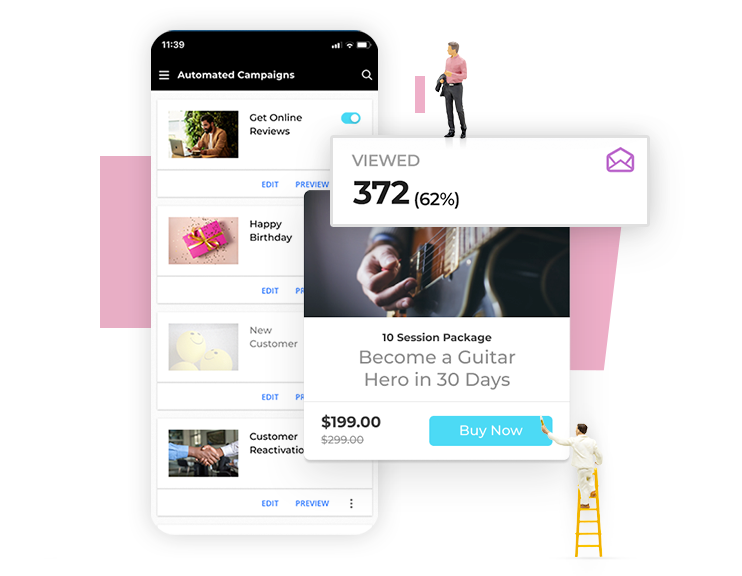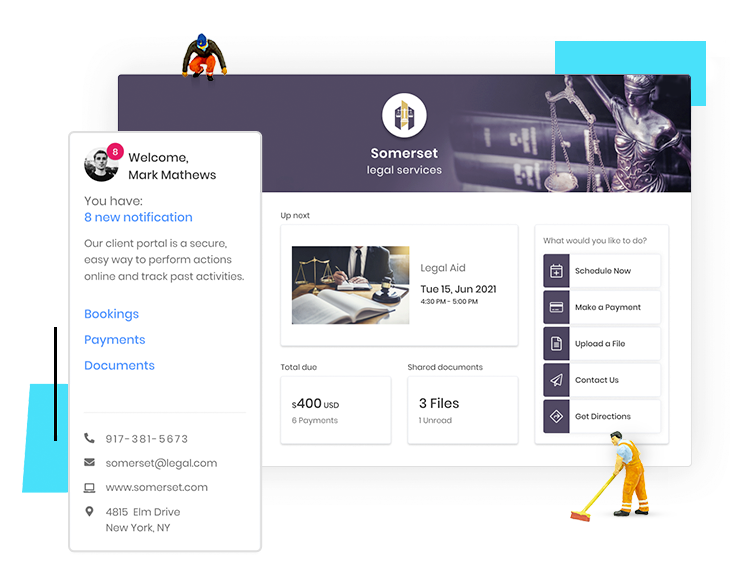
For small businesses
Run & grow your business on a single app

For small businesses
For companies serving SMBs
Expand your offering with our modular platform
Stay up to date on your client’s activity and understand your clients’ needs. Make better decisions on how to personalize your engagement with them and offer the ultimate client experience.




Send estimates & branded invoices, charge credit cards and receive payments online in just a few clicks. Streamline and automate your payment collection process and never chase your money again.




Enjoy more organized and productive workdays with a powerful business calendar. Keep your calendar full and automate your most time-consuming tasks with self-service booking and automatic appointment reminders.




Create amazing customer experiences and grow your bottom line while you’re at it. Send out targeted and branded email & SMS campaigns like a pro, offering coupons, nurturing your clients and generating repeat business.




BizAI, your very own AI-driven business advisor, will get to know your business and offer quick and valuable advice tailored to your business needs.




Allow your clients to book, pay, contact you or take any other action online, independently and securely. Be available 24/7 with a branded self-service client portal. Getting booked and paid has never been easier!




Eco Bridal
Hot Money Studios
The Muscle Relaxers
Curious what vcita’s small business management software can do for your business? Talk to our experts.
Copyright 2024 vcita Inc. All rights reserved.



